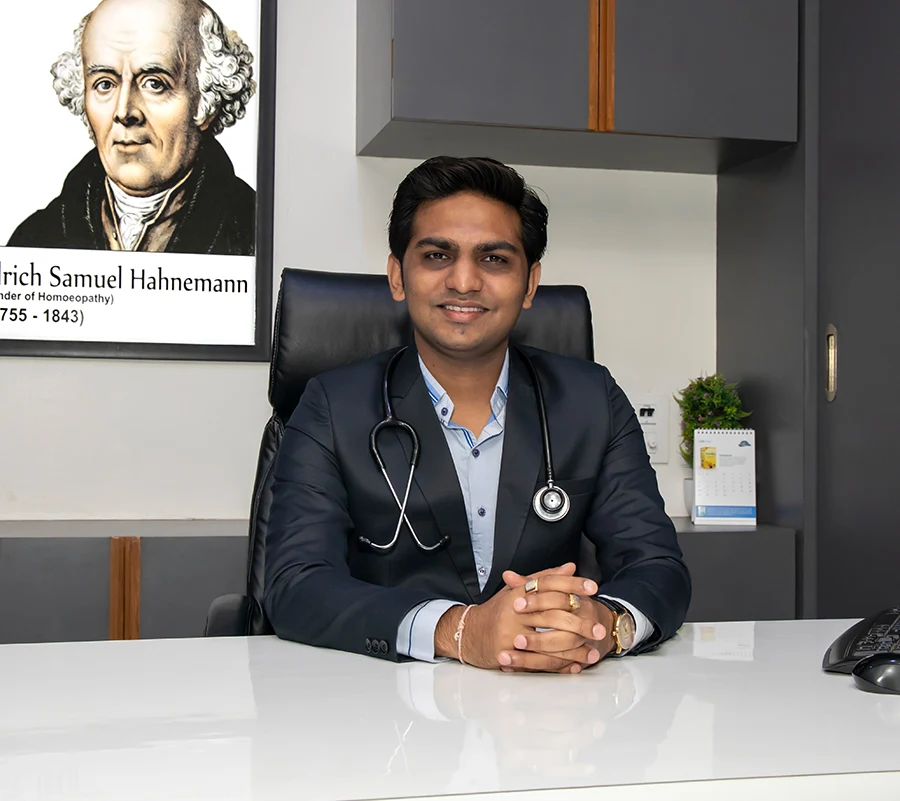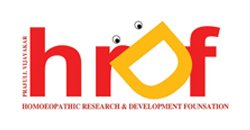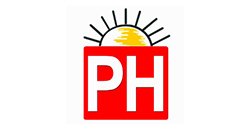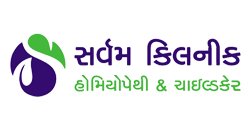About Homeopathy
Explore About Homeopathy, Foundations, Principles, and Benefits of Natural Healing with Homeopathy
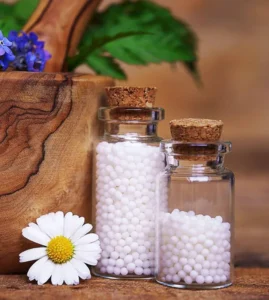 It might come as a surprise to you that homeopathy is by far the most widely practiced alternative medicine and the 2nd largest system of medicine in the world as per the World Health Organization (WHO). It is being practised in over 80 countries and used by 50 crore people worldwide including Western and Eastern Europe, India, America and many parts of Asia as well. China and Japan have begun programs. The world homeopathic market is valued at over 2.7 billion dollars with France leading the market at approximately 405 million dollars and Germany following second at nearly 270 million dollar and has the current annual growth rate being 25%.. So, rest assured, there are many millions of people throughout the world choosing homeopathy as their choice for good and effective healthcare.
It might come as a surprise to you that homeopathy is by far the most widely practiced alternative medicine and the 2nd largest system of medicine in the world as per the World Health Organization (WHO). It is being practised in over 80 countries and used by 50 crore people worldwide including Western and Eastern Europe, India, America and many parts of Asia as well. China and Japan have begun programs. The world homeopathic market is valued at over 2.7 billion dollars with France leading the market at approximately 405 million dollars and Germany following second at nearly 270 million dollar and has the current annual growth rate being 25%.. So, rest assured, there are many millions of people throughout the world choosing homeopathy as their choice for good and effective healthcare.
In 1796, just over 200 years old, Homeopathy was founded by the great German physician Samuel Hahnemann. Homeopathy is based on the law of similars, according to which, a substance capable of producing certain symptoms in a healthy individual is capable of treating similar symptoms in a diseased person. Thus, the logic is to evoke a healing response from the body itself rather than trying to suppress the disease manifestation.
Moreover, Homeopathy believes that each person reacts differently to the same stimulus – this is called ‘individualization’, and it is a unique feature of homeopathy. For example, it is common experiences that while cutting onions the eyes start burning, the nose starts to run and sometimes a person will sneeze. Red chilly powder can have a similar effect – burning, watering eyes, irritated and runny nose, sneezing.
However, the effects of the two differ significantly: while onion causes a bland nasal discharge with a burning eye discharge, red chilly there is burning in the eyes and nose but both the discharges are bland. In both the instances the phenomenon is like the common cold but the nature of the discharges varies. So two people with the same common cold need two different drugs based on their specific manifestation. Both onion-Alium cepa and red chilly are homeopathic drugs. There are a number of other substances that give rise to symptoms like the common cold, each with subtle variations, and all of them are useful in the treatment of various “types” of cold.
Homeopathy is the holistic science where both physical and psychological components of the diseased person are taken in to consideration to select the medicine. This truth has been accepted by modern medicine only now – psycosomatic disease. Also, the fact that diseases are not caused by the mere presence of disease-causing organisms in the internal or external environment, but rather due to the weakening of the body’s defence mechanisms.
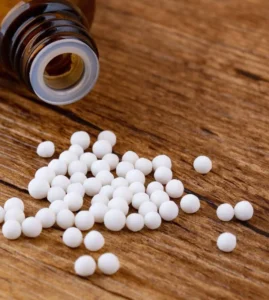 Homeopathy is based on few Hahnemannian principles.
Homeopathy is based on few Hahnemannian principles.
- Law of similimum — a drug cures those symptoms in diseased person , which it may cause in healthy persons. To find a remedy ,we need to compare symptoms in a patient, to symptoms of remedies in MATERIA MEDICA, which is data bank of symptoms collected by reputed past homoeopaths. It is like applying a key suitable to our lock from a given bunch of keys.
- Law of minimum dose — it says that minimum possible single dose may be used to minimise side-effects of any medicine.
- Medicines are prepared by potentisation.
- law of miasms — if indicated remedy do not work , despite the best possible selection , look for obstruction in cure , which he defined as a miasm.
- Hering’s law of cure — during perfect cure, symptoms may shift from above downward or from vital organs to less vital structures.
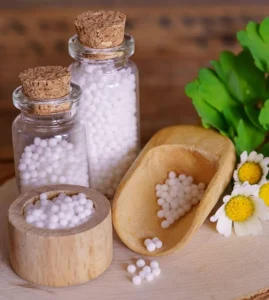 Advantages of Homeopathy
Advantages of Homeopathy
Avoid surgery
Chalazion, tonsillitis, venereal or general warts, corns, ganglion, fistula-in-ano, internal or external piles, renal calculi etc. are some of the conditions treated successfully with Homeopathy, conditions commonly operated on.
No side effects, no contraindications
Decades of clinical use and trials of the preparations have concluded that Homeopathic medicines are safe with other modes of treatment, effective, non-toxic, and free of any side effects.
Cost-effective treatment
Homeopathic treatment is extremely cost-effective in the long run especially keeping in mind that treatment is sought for chronic diseases that need long-term treatment. Homeopathy believes in employing a single remedy, in minimum dose and minimal repetition when treating any patient. Homeopathic medicines are therefore inexpensive as compared to medicines from the other medical systems. Moreover, Homeopathy also obviates the need for surgery in a number of conditions such as warts, piles, fissures, tonsillitis, ovarian cysts and kidney stones for which patient may otherwise have to pay up a lot for conventional treatment methods.
Curative & palliative
Homeopathy not only cures cases but also offers relief to conditions progressed to irreversible structural changes such as degenerative arthritis, side effects of chemo or radiotherapy etc.
Pain Relief without side effects
Clinically, homeopathic medicines successfully relieve colic, spasms, general or trigeminal neuralgia, migraine headaches, toothache, chronic lumbago, sciatica, pain due to trauma etc.
Patient-friendly and convenient
Homeopathy is a complete system of medicine that assists the natural tendency of the human body to heal itself. Homeopathic medicines being easy to administer, sweet to taste, non-invasive and free of side-effects, are extremely convenient for the patient and therefore command better patient compliance. They are absolutely safe even if taken for prolonged periods of time. The doctor-patient relationship is vital in Homeopathy, where the homeopath becomes a friend, philosopher, and guide to the patient, a healer as well as a preserver of good health.
Anti-allergic, anti-viral, anti-septic
Unlike allopathic medicines, homeopathy offers non-drowsy allergy treatment for hay fever, complete cure for viral warts, faster relief for viral cold sores and herpes and anti-bacterial therapy for infectious conditions. These have been verified at our clinics over the past 90 years and by clinicians worldwide.
Human tested safe Medicines
The biggest advantage of Homeopathy is that irrespective of the number of organs or systems involved, only a single remedy needs to be given at a time, termed the ‘similimum’ or the constitutional remedy that covers the entire case. Homeopathy is against animal testing as animals do not speak and the exact symptoms are not recorded. Homeopathic remedies are directly tested on healthy human beings through a scientific process called drug proving which enables recording of even mental and emotional symptoms.
 Each work has to pass through these stages – Redicule, Opposition & Acceptance What matters at the end is TIME !” so is Homeopathy.
Each work has to pass through these stages – Redicule, Opposition & Acceptance What matters at the end is TIME !” so is Homeopathy.
Homeopathic medicines are placeboes
White sugar pills, as such do not have any medicinal value. But these act as vehicles or carriers for the medicines, which are alcohol based. Otherwise the medicine can be taken directly or dissolved in water. Homeopathic medicines have been scientifically studied the world over and found to be effective in a wide range of diseases. The World Health Organization (WHO) has recognized Homeopathy as an accepted system of medicine and the world’s second largest system of medicine. Homeopathy even works on animals in diseases like distemper and fifty percent of veterinary doctors in UK use Homeopathy. It shows effective results in infants even in acute diseases such as abdominal colic. This would not have been possible if homeopathic remedies were placeboes.
All homeopathic medicines are the same
Although all homeopathic medicines look alike, essentially they are not the same. The basic ingredients of homeopathic medicines come from 3500 different sources that are mainly derived from plants and minerals. Their active principles are extracted into various solvents. For better palatability, the liquid homeopathic medicine is poured into small globules, which are highly porous and therefore absorptive. Although they may look alike, every homeopathic remedy is different from another.
Homeopathy is a ‘magic remedy’ that can treat any disorder.
Homeopathy like any other field of medicine, has its limitations. For example, it cannot treat cases where surgery is unavoidable or structural irreversible pathologies, many dental cases, etc.
Homeopathic medicines are slow to act and cannot be used in acute cases
Most people take recourse in Homeopathy for chronic problems such as arthritis, allergic asthma or skin conditions, etc., which take a longer time to be treated with any other system of medicine too. However, in acute ailments like fever, diarrhoea, acute cold, cough, etc., homeopathic remedies act as fast as conventional medicines, sometimes even faster.
There are too many dietary restrictions to be followed during homeopathic treatment
The only medical restrictions that a homeopath may impose depend upon the disease that the patient suffers from; for example, diabetics should avoid sweets and a high carbohydrate diet. Since homeopathic medicines act through nerve endings, traditional homeopaths do not prefer the use or consumption of any substance with strong odors like toothpaste, garlic, onions, etc., as this could affect the action of homeopathic medicines. Modern homeopaths recommend having the medicines after rinsing the mouth also advocate placing the medicine below the tongue for best results.
Homeopathic doctors are quacks who do not have formal training in the field of Medicine.
Qualified doctors practice Homeopathy, in most parts of the world. In India, there are over 200 homeopathy medical colleges and world over the number is close to 500, which offer degree and post-graduate studies in Homeopathy. At present, there are over 2,00,000 trained homeopaths in India and at least half-million across the globe.
Homeopathy cannot be used in diabetic patients.
It can be used! The minute amount of sugar globules (the little round pills) taken daily does not matter. Sugar intake in the daily diet is significantly higher than that taken by a few globules. Surprisingly from 1 table spoon of sugar we can prepare pills that can last for 1 month & 1 spoon of sugar taken over a period of 1 month won’t cause any damage to diabetes patients.
Homeopathy and Allopathy cannot be taken together
In patients suffering from drug-dependant diseases such as diabetes and high blood pressure, allopathic drugs cannot be suddenly withdrawn; hence, homeopathic medicines may be taken with allopathic medicines. However, allopathic medicine is often palliative or suppressive. For example, if a patient with headache takes a painkiller, his symptoms would get masked and therefore a good prescription by a homeopath could become difficult. Similarly, some medicines in Allopathy tend to suppress rather than cure while homeopathic medicines may expel toxins. In such cases, it is better to take Homeopathy alone.
Homeopathy cannot help surgical cases at all
A number of surgical conditions can be treated effectively with Homeopathy, for e.g. recurrent tonsillitis, piles, fissures, fistula, chronic ear discharge, vocal cord nodules, kidney and gall bladder stones, small-sized uterine fibroids, ovarian cysts, warts and corns. However, every medical science has its set of advantages and limitations. Thus, in certain cases where the disease has reached an advanced stage or in emergency cases, surgery is essential and cannot be avoided.
It is interesting to see how this science has created a special place for itself today in India as well as globally!
Facts about Homeopathy – Global
- As part of its global strategy ‘Health for All’ in the 21st Century, WHO (World Health Organization) has supported the integration of conventional and alternative medicines to improve the quality of health care.
- Some famous patrons of Homeopathy include Mahatma Gandhi, Tony Blair, Pope Pius X, Paul McCartney, Richard Branson, Martina Navratilova, Boris Becker, Catherine Zeta-Jones, Whoopi Goldberg, Pamela Anderson, The Chili Peppers and Tina Turner to name a few.
- According to WHO, Homeopathy is the 2nd largest system of medicine with a growth rate of 20-25% every year. The growing popularity of Homeopathy and its legal acceptance has been seen in 66 countries.
- The British Royal Family has been under homeopathic care since 1980. The Queen carries her ‘black box’ of homeopathic remedies on her travels.
- 15% of the British population trusts homeopathy and consults homeopathic physicians.
- France is the largest Homeopathy market in the world (over 300 million euros) followed by Germany (200 million euros).
- Homeopathy is the leading alternative medicine in the US.
- Homeopathy has made major advances in regions like the Mediterranean basin, South America, Eastern Europe, and India.
Facts about Homeopathy in India
- Homeopathy came to India courtesy Maharajah Ranjit Singh of Punjab.
- Homeopathy constitutes approximately 14% of the total alternative market with an annual growth rate of 20-25% as compared to pharma, which has a 10% growth rate.
- The Homeopathy market in India is worth Rs. 12.5 billion.
- The Government of India developed the homeopathic system of medicine by setting up a homeopathic enquiry committee way back in 1948, and today it is accepted as one of the National Systems of Medicine.
- There are over 3,00,000 qualified homeopath practitioners, 7,500 government clinics, 307 hospitals, and 180 Teaching Institutes affiliated to Universities existing in India specific to Homeopathy.
- A current survey in 7 Indian cities revealed that 48% people trust Homeopathy as the preferred option of treatment.
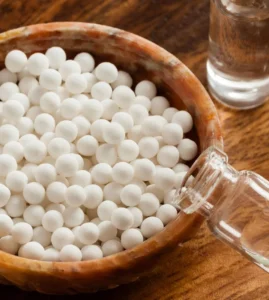 Homoeopathy uses this opposing effect to bring about cure in a manner somewhat similar to that seen in vaccinations & desensitizing methods employed in modern times.
Homoeopathy uses this opposing effect to bring about cure in a manner somewhat similar to that seen in vaccinations & desensitizing methods employed in modern times.
During Hahnemann’s times, very crude methods like blood letting, burning with red hot iron, use of emetics & purgatives etc. were used without any scientific basis. He was frusteted with such practice, stopped practicing & started transleting books in different languages. According to him the cure should be rapid, gentle & permanent & also to be scientific & logical.
Once while translating Cullen’s Materia Medica from English to German, he came across the explanation given by Cullen about the curative powers of Peruvian ( Cinchona ) bark in curing cases of Malaria.
He read that cinchona bark (quinine) cures ague (malaria) since it was bitter. This explanation did not satisfy him and he decided to try it out for himself. He prepared a fresh decoction of the Peruvian bark and took it every day for a few days. He noticed that after a few days that he developed chills, fever and sweating, the typical symptoms of malaria. When he stopped drinking the decoction, the symptoms disappeared. He repeated the experiment on himself and his family members many times with the same results. He came to the conclusion that what causes, cures. Being a voracious reader he found several such incidents recorded in the medical journals of the past, but the explanations were far from satisfactory.
He took it upon himself, to experiment on his friends and family members with several other substances and recorded his observations. He noticed after some time that the effects were similar to the diseases that were occurring naturally, confirming his earlier conclusion.
This was the basis of the new & scientific system of medicine called HOMOEOPATHY & the doctor was its Founder Dr. Hahnemann.
Much before Hahnemann, Hippocrates the father of medicine mentioned the possibility of Similia Similimbus Curentur – Likes cures likes as one of the therapeutic methods. But it was not confirmed until Hahnemann came along. Ayurveda, the ancient Hindu medical system also says something to that effect.
Though the idea existed much before Hahnemann, it was tenuous as far as the dosages were concerned. More was always considered better. Hahnemann experimented with decreasing quantities i.e. grain doses, ½ grain doses and in the case of herbs – drop doses (of the freshly expressed juices). He noticed that the lower he reduced the dose of the medicine, they were able to still produce disease – like symptoms when given to healthy human beings.
Hahnemann should be given credit on 2 counts – he was the first to test single medicines and note their effects and attempting to record the effects of the medicines when given in a particular quantities i.e. determining the dosages.
Basing his conclusions on his experiments, he postulated the homeopathic principles of single, simple and similar medicines. He was the first to coin the word allopathy (different suffering) to differentiate it from Homeopathy (similar suffering). In those times antipathy was in vogue too. That is, medicines were given which produced an opposite state to the one that the patient was suffering with. Patient with constipation was given a drug, which caused diarrhea, for sleeplessness a somnolent was prescribed without going into the cause of the problem. This practice is in vogue even to this day.
Substances in sub-minimal doses are given to healthy human beings and their effects are recorded. When the drug “matches” the symptomatology of the patient, it is given to effect a positive change.
For instance it is a common phenomenon that while cutting onions, the eyes tend to water with burning tears and the nose runs- a symptom of the common cold. Alium cepa (the common onion) is given in subminimal doses for cold. There are several substances that produce cold-like symptoms with their individual characteristic nasal and eye discharges. Tobacco when first smoked or chewed causes nausea, dizziness, vomiting, cold perspiration, unconsciousness and occasionally death- symptoms of tobacco poisoning. Anyone with a disease exhibiting the characteristic symptoms of tabacum will be cured by tabacum. The quantity of tobacco used is always minimal.
Chronic Diseases:
Hahnemann first postulated the concept of chronic diseases. He recognized that there is a tendency for every human being to develop diseases that are inherited. This was much before the word Genetics was coined. He called these tendencies Miasms. He affirmed that the host inherits the tendency to develop a disorder. To illustrate – we are constantly being bombarded with allergens, microbes, carcinogens etc. not all of us succumb to the onslaught. Some do, because of the inherited tendencies. Hahnemann believed that the environment is secondary to the tendencies in the host which are primary causes in the development of the disorder (s). Other factors that Hahnemann attributed to the development of diseases are the attitude of the person. People become sensitive to certain diseases because of their mindsets and lifestyles. In effect, Hahnemann was the father of psychosomatic medicine.
Hahnemann believed that disease is caused by imbalance or derangement of the VITAL FORCE which maintains the mental, physical & moral balance of an individual. Homoeopathic medicines help the body help itself in correcting this imbalance & thus while removing the presenting acute symptoms, also helps in preventing similar diseases from recurring in the future by raising the body’s immunity.
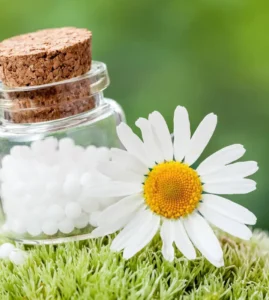 Medicines are prepared strictly in a standardised manner by combining medicinal dilution with potentisation.
Medicines are prepared strictly in a standardised manner by combining medicinal dilution with potentisation.
Serial dilutions reduces quantity of medicines , while simultaneous potentisation raises its efficacy to unbelievable heights . Extreme dilution renders medicines free of side-effects , whereas potentisation render it with million fold efficacy It is paradoxical that despite reduction in medicinal quantity, its curative powers are multiplied due to potentisation. By repeating the process , it achieves phenomenal powers to cure . With reduction in medicinal material , side-effects are zeroed and only healing powers are left in higher potencies .This is the greatest Hahnemannian gift to the ailing world ,simultaneously , the greatest medical puzzle to modern medicine . Sources of medicine ranges from inorganic salts, minerals, metals , herbs , vegetations, plant juices, biological products, animal products, energies[ x-ray] ,inert materials and many others. It was really a wonder that even sand gave excellent medicine — siliceae . Medicines are prepared with dilution and potentisation in inert vehicles like lactose sugar, alcohol, or water etc.
Medicines are named according to its source and method of dilution and potentisation . For example, Arnica 30 means So original 1 ml of arnica plant juice is diluted by a factor of 1/100 every time , for 30 times, with potentisation . So original 1 ml of arnica plant juice is diluted serially with zillions of liters of alcohol for dilution with potentisation . This method of preparation of homeoe medicines seems controversial to Modern Pharmacology or Chemistry because according to Avogadro’s number , no substance can found above trillionth dilution . In other words , even the most sensitive laboratory can hardly detect any drug substance in /above 12 potency. They think medicines cannot work this way. Till today , we have no answer , why it should work at all. Despite this unanswered enigma , it cured millions of patients , all types acute / chronic / serious / injuries /burns/allergies/ psychiatric/ pediatric and what not . So , it works definitely and works still better with higher dilution . Arnica works from zero dilution to cm dilution [ diluted 100,000 times ] Best results are not with undiluted arnica , but 1000 or 10000 or 50000 times diluted arnica . It seems that medicine produces imprints on the vehicle [alcohol or sugar] and with repeated process though medicinal quantity is reduced materially ,but its imprint on vehicle is sharpened for longer life [ homeopathic medicines have no expiries except if heated . Heat destroys medicinal image on the alcohol /sugar. One drop of medicine can cure millions of patients .
Dispensing Of Medicines
Homoeopathic medicines can be dispensed in alcoholic drops, lactose powders, sucrose pills and many more. The original potencies are kept in alcohol and from it is dispensed further in form of powder, pills, tablets etc. Sugar base may be cane sugar or milk sugar. Its dispensation is non-glamorous as pills may be too small to believe its fabulous curative powers. Medicines are always taken on empty stomach .Avoid any food /liquid before and after half an hour. Take on tongue and let it be dissolved there. Do not swallow it. Alcoholic drops are mixed with plane water and are to be swallowed . WHO has accepted it as an alternative system of medicine. It is practiced in many counties of the world.

Dr Samuel Hahnemann
"In Communicating to the world this great discovery I am sorry that i must doubt whether my contemporaries will comprehend the logical sequence of these teachings of mine, and follow them carefully and gain therby the infinite benefits for the suffering humanity which must inevitably spring from a faithful and accurate observance of the same."
Dr Pratik Gorasiya
When almost the entire world had discarded homoeopathy, one wonders what drove Dr. Pratik Gorasiya towards pursuing the field. What drove him was his quest for knowledge, the challenge of revolutionize the practice and self-belief. The founder of homoeopathy was a German man, Dr. Samuel Hahnemann, The God of homoeopathy as he is known. Dr. Gorasiya had one belief, that when the Germans create something, it has to be perfect. And if there is perfection, then why is the field struggling? He started investigating into the flaws and the setbacks in the profession.
